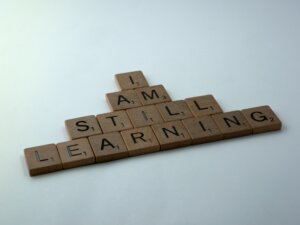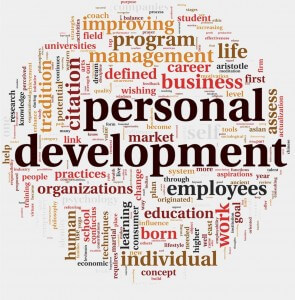When I asked friends for ideas on training for this article, here’s what I received:
- How to train your dog to use the toilet.
- How to make a mountain out of a mole hill.
- How to make an American quilt.
- How to extract your own wisdom teeth.
- How best to express road rage-flipping the bird or screaming obscenities.
- How to fit the maximum amount of beer in a fridge.
- How to escape a burning building using only # two pencils and dental floss.
- How best to ____ off telemarketers.
Creative, yes, but not at all what I had in mind. But it does tell us what people think about training. It gave me an idea about how we could most effectively be using the learning tools we are given.
Say the word, “training” and it elicits an immediate frown from the trainees-to-be–unless these same employees are anxious to get out of work at their job, which isn’t a good thing either. Most training is boring. It’s always the same thing–prescriptive. Trainers who can take that curriculum and turn it into something more relevant, interesting by adding experiences and examples, some not in the book, and therefore, fun, are the opposite of boring. Yes?
Believe it or not, some trainers are more afraid of the public speaking aspect of training than conducting the training itself. Those trainers do what they have to, but they haven’t necessarily succeeded in making it a memorable experience for the trainees. Not all the necessary communication is written down in the training curriculum or trainer guide. The trainer’s guide doesn’t say be yourself, be self-assured and try to make the trainees want to be a part of this exciting endeavor.
Let’s face it: training guides are meant to help a trainer accomplish the basic delivery of pertinent knowledge and doesn’t cover too much on how to make it relevant on a personal basis. The very business and staid nature of the guide makes some trainers try to make a seemingly “mission impossible” into “an affair to remember” without any help.

We know from research that people learn better when certain techniques are used. We apply those learning techniques in our training modules because they reportedly are the best ways to have our trainees remember what we want them to remember.
But what if they are more focused on nonsense questions like the above, and view this training as having little value?
We’re doing all the right things. We are using the prescribed curriculum; we are using the trainer notes. We have icebreakers, experiential activities, quizzes, and evaluations. But is anyone listening?
Making your training “an affair to remember” will certainly solve that concern.
So, how do you get there?
There are probably some born communicators or those who have learned their craft over the years, but for those who are aren’t, here are some ideas to help you present a more dynamic lesson.
Training, teaching, public speaking, conducting successful meetings, presenting depositions in court or talking to a jury, and, of course, acting are all activities based on a performance, requiring credibility, passion, and the ability to draw from your own personal bag of tricks to make it real. I’ve talked about several of these activities in other blogs, but hopefully, this one can tie them all together.
My biggest concern for trainers is that, for the most part, they are more focused on the process of training according to the trainer’s guide, than on communicating with the trainees or audience. It’s a little like “which came first?” The basics of public speaking apply, taking into account the audience, the subject and the trainer/presenter/speaker, etc. I’m not saying make a speech or lecture instead. Do lecture, if that’s appropriate. Should you follow the “plan,” know that even the introduction of the training itself, the transitions and instructions to carry out the activities, and the overall purpose and motivation for the training must be communicated effectively.
Why do some students love their teachers? Because they’re young and don’t know any better? No, because the teachers are charismatic. They’re fun. They’re themselves and the students know that. The teachers care about the students and ensure they get the a lesson–not just going through the motions. It should be no different with training. And trainers, too.
Know your audience, know your subject and know yourself.
Sounds simplistic and maybe that is the beauty of it. Knowing the audience is primary to any training needs assessment, environment, implementation, and plans. The same goes for the subject–tailored, of course, to your audience. Then, the biggest factor, often ignored by managers and training staff: the assignment of a trainer who can hold and engage the audience with the subject matter.

To some trainers, even though they know training and all the requisite tools, public speaking is still their biggest fear, their “mission impossible” as it is for most people. That is the reason some trainers fall back to the etched-in-stone training process.
Sure, the program takes into account how people learn and what techniques do that best, but bottom-line for trainees is that they have to care. The only way to make them care is to have someone who can grab their attention, make the training meaningful and communicate the message (the subject effectively). That is the job of the trainer or facilitators of training. Either way, we’re going to make that “mission impossible” “an affair to remember.”
For those trainers or facilitators who need help in owning the stage and being more confident, I won’t just say, “practice, practice, practice.” Practice is important, but there are other techniques as well. Actors know how to be comfortable in their own skins as well as others. The trick is to get the right help to identify who you are, and to use that knowledge effectively.
Once you know who you are and why you belong on the stage the rest is conversation–the training module, made easy.
Use the all the personality tools you own, the information you feel critical to communicate and connect with the audience. “Owning” the moment and the stage is key to alleviating public speaking/training fears. This is where the knowing yourself comes in. Everyone has a unique personality and I encourage them to use it. Not everyone is a dance a minute on the stage or a joke teller or a witty soul. But I wouldn’t tell a cowboy about to make a speech he had to take his hat off–especially if that is not who he is. In essence, be yourself and use what is unique about you as you would in talking with friends. Be a person. That will help the moment feel more natural–more like conversation, which isn’t fearful.
Communication considerations for trainers.
- How do you get your audience’s attention and maintain it?
- Recognize different training groups, different approaches, different sizes of training–one size may not fit all.
- How do you make the trainees remember what you said? In public speaking, we use storytelling and humor among other things.
- How do you influence your audience?
- Knowing the charisma you need to become a dynamic and respected communicator or facilitator of training? A hint. It’s already in there. In you!
Effective communication couldn’t be more important in training.
No one should deny our purpose is for our trainees to absorb our subject matter and commit to using it. Even if you have a product that sells itself you still have to have get someone to pay attention to it to know they even want it. Basic communication means we have information to convey and we need our audience to “act” on that information (even if it is just to remember it) or we wouldn’t be there in the first place.
Communication is about sending and receiving information. Actors are taught acting and reacting–virtually the same give and take in a speaking or training environment. Acting is about audience perception and our ability to influence that perception. To get others to listen, to remember, to change their minds or attitudes is communication.
Actors aren’t the only ones who need to know their audience, their subjects, and themselves, trainers should, too, if they want their training sessions to be “affairs to remember.” Those results are the best kind, after all.
The most efficient training is the best communicated training.
—
For more resources about training, see the Training library.
 Sections of this topic
Sections of this topic















